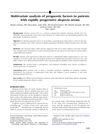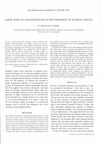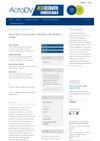TLDR Pulse steroid therapy for alopecia areata shows a 43% complete response rate but has a high relapse rate, especially in children.
The systematic review evaluated pulse corticosteroid therapy (PCT) for alopecia areata (AA) across 41 studies with 1,078 patients, finding a 43% complete response rate and a 17% relapse rate, with higher response rates in pediatric studies. Side effects were reported in 21% of patients and were generally minor. Good prognostic factors included short disease duration, multifocal AA, and first episode of disease. However, the lack of standardized protocols and well-controlled trials limited the ability to conduct a meta-analysis, underscoring the need for standardized guidelines in future research.
71 citations
,
December 2013 in “The journal of investigative dermatology. Symposium proceedings/The Journal of investigative dermatology symposium proceedings” There are no FDA-approved treatments for Alopecia Areata, and current options have varying success and relapse rates.
 26 citations
,
September 2012 in “Journal of The American Academy of Dermatology”
26 citations
,
September 2012 in “Journal of The American Academy of Dermatology” Patients with rapidly progressive alopecia areata often have a better outlook and shorter disease duration, with regrown fine hairs and no past alopecia being positive signs.
66 citations
,
May 2011 in “Dermatologic therapy” Guidelines help design better trials to compare alopecia areata treatments.
141 citations
,
February 2005 in “Journal of the American Academy of Dermatology” Oral prednisolone helps hair regrowth in alopecia areata.
 80 citations
,
November 1975 in “Acta dermato-venereologica”
80 citations
,
November 1975 in “Acta dermato-venereologica” Large doses of glucocorticoids are not suitable for general use in treating severe alopecia areata due to inconsistent results and risks.
 October 2023 in “Acta dermato-venereologica (Print)”
October 2023 in “Acta dermato-venereologica (Print)” People with severe hair loss have lower zinc levels in their blood.


